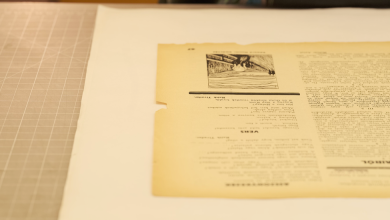The Enduring Appeal of Moral Monsters

THE HANGMAN AND HIS WIFE: The Life and Death of Reinhard Heydrich, by Nancy Dougherty
What is the fatal attraction they exert on us, the Nazis? We continue to read books and watch documentaries about them many decades after they coolly commenced upon exterminating the Jews — a genocide that in terms of its duration and thoroughness remains unparalleled in the bloody annals of history. (A close instance would probably be the extermination of the Armenians by the Turks during World War I, about which Hitler said, in one of his incendiary speeches: “Who, after all, speaks today of the annihilation of the Armenians?”)
Does their enduring allure tell us something about what we fear in regard to our own capacities for malignant behavior, what Freud referred to as the “death instinct”? Or perhaps, notwithstanding Hannah Arendt’s decidedly tone-deaf line about the “banality of evil” — witness the recent release of over 70 hours of tapes Adolf Eichmann made, postwar, in which he celebrates the extermination of the Jews — it has to do with the perverse glamour of evil instead.
In my own zeal to comprehend what transpired under the Third Reich I have accumulated bookshelves’ worth of well-thumbed titles such as “How Could This Happen” and “The Nazi Conscience,” as well as accounts focusing on the Gestapo; Nazi women; Hitler’s decorator; his beloved niece Geli, whom he probably killed (although it was presented as a suicide); the philosophers who influenced him; his “pact” with Hollywood; his relationship with Eva Braun … and so on. It seems as though every year new tomes appear about high-ranking Nazis — Adolf Eichmann, Hermann Goering, Joseph Goebbels, Rudolf Hess and Albert Speer, even a fat volume of Heinrich Himmler’s letters to his wife. And that’s to say nothing of the exhaustive canon on the Führer himself.
Now comes a new biography of Reinhard Heydrich, “The Hangman and His Wife,” by Nancy Dougherty. Not a fervent believer (he only became a member of the Nazi Party in 1931, two years after his future wife, Lina), Heydrich rapidly rose from nonideological roots to become head of the SD (the intelligence service) and the Gestapo as well as an architect of the Final Solution.
In a foreword to the book, Christopher Lehmann-Haupt essentially throws up his hands before the mystery of Heydrich’s evolution from a musically gifted, intelligent and lonely little boy into a monstrous, hyper-rational technocrat with a photographic memory and unmatched organizational abilities: “One searches in vain for a rational explanation of Heydrich’s descent into evil,” he writes. “No single biographical fragment satisfies.”
From the start, one of Heydrich’s strong suits was his striking Aryan looks. When he first met with the physically unimposing Himmler, Heydrich was immediately hired as head of SS intelligence, likely because Himmler “was strongly influenced simply by the way Heydrich would look in his new uniform.” For all their focus on Nordic physical perfection, the Nazi leaders were, frankly, a bunch of misfits and mieskeits (to use the Yiddish slang for the ugly). Himmler himself was weak-chinned and squinted from behind thick glasses; Goering was fat and jowly; Goebbels was clubfooted. Even Hitler, whose hyperbolic blue eyes made him the object of female devotion, had the unhinged appearance of a man held barely in check.
Dougherty’s particular contribution is that she has extensively interviewed the feisty and mostly unreflective widow, Lina, who generally ends her revisionist observations with a verbal shrug: “nicht wahr?” (wasn’t it so?). Lina published her self-serving memoirs, “Life With a War Criminal” (she intended the title to be ironic), in 1976 and died a little more than four decades after her husband. Dougherty herself died in 2013 before completing a final draft of her biography, which was then edited by Lehmann-Haupt, who died five years later.
There is, perhaps because of the successive deaths of both author and editor, a slightly morbid, almost futile feel to this book — as though its subject has outrun the attempt to pin him down. “The Hangman and His Wife” sums up Heydrich’s rapid-fire career and the qualities that enabled him to succeed — “his Luciferian coldness, amorality and insatiable greed for power,” as the historian Joachim Fest puts it. Because of the Semitic-sounding last name of a close relative, he was shadowed by rumors that there was Jewish blood in his family and mocked during his nine years in the navy; one former roommate attested that “everyone more or less took Heydrich for a Jew.”
This general suspicion seemed only to fuel his drive: “There is no doubt,” observes another former bunkmate of Heydrich’s, “that ambition was his characteristic peculiarity. … On all occasions, he wanted to be outstanding — in the service, in front of his superiors, with the comrades, in sportsmanship and in bars.” We learn that unlike many Nazi leaders, he “rewarded technical expertise, promoted men known for pragmatic cynicism and insisted on factual accuracy,” although he was also known for paradoxically informing underlings that “truth is for children.” By the end of Heydrich’s life he had become confident and incautious enough that, with the top down on his Mercedes convertible, he met an assassin’s grenade on May 27, 1942. He lingered for several days and was given a full-dress state funeral, which Hitler attended.
Dougherty’s account makes for absorbing reading without offering radically new insights into what made Heydrich tick. Although it presents itself as revelatory because of the interviews the author conducted with his wife, Lina Heydrich is too shrewd to be caught in anyone’s net; she is willing to admit to complexities in her marriage and has strong, sometimes witty opinions about other Nazis, but concedes nothing when it comes to the horrific vision her husband embraced.
Then again, I would suggest that even the most psychologically astute biography is not equipped to explain the guiltless machinations of ruthless despots: It can never catch the elusive, complex matrix of character and circumstance that creates a Heydrich (or a Putin, for that matter). Gitta Sereny, who wrote a book that cast doubt on the self-exculpating version of events the Nazi architect Albert Speer composed from prison, also authored a biography of Franz Stangl, the commandant of the Treblinka and Sobibor death camps, in which she tried to understand, in a nonjudgmental fashion, what drove him. And the controversial psychotherapist Alice Miller analyzed Hitler within the context of historically abusive patterns of Germanic child-rearing, describing Hitler’s brutal treatment at the hands of his father, Alois.
Still, however comprehending and far-reaching these efforts, none of them fully suffice. Such creatures seem to exist in a space apart, infused by a cruelty that is inconvertible and feeds on itself without being entirely traceable to early experiences, painful or humiliating though they may be. In the end, the reader is left gazing at something that is ultimately inscrutable. Just as actual train wrecks tend to stop us cold because of their apparent inevitability and imperviousness to intervention, moral train wrecks seem to create a similar element of stop-time — a mixture of fascination and paralysis — with no one able to prevent the damage even as the carnage and destruction roll on.
Daphne Merkin is a cultural and literary critic. Her most recent book is a novel, “22 Minutes of Unconditional Love.”
THE HANGMAN AND HIS WIFE: The Life and Death of Reinhard Heydrich, by Nancy Dougherty | Illustrated | 656 pp. | Alfred A. Knopf | $40




